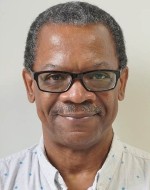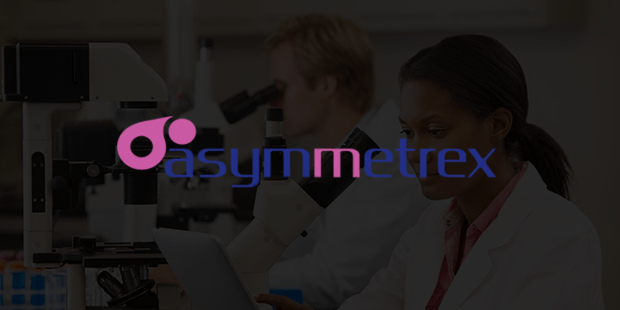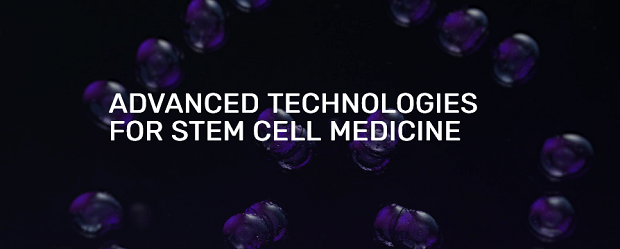Tech Company News has been following technology and business developments with Massachusetts stem cell biotechnology company Asymmetrex® for several years. In past interviews, company founder and CEO, James L. Sherley, M.D., Ph.D., has shared Asymmetrex®’s vision of transforming stem cell science and medicine by means of the company’s innovation in counting stem cells essential for stem cell and gene therapies. In June of this year, TCN noted a feature article in the online newsletter of the Parent’s Guide to Cord Blood Foundation that indicated that Asymmetrex might be getting closer to achieving its vision. TCN decided to check in with CEO Sherley again to find out what was going on.

TCN: The recent feature on Asymmetrex® in Parent’s Guide to Cord Blood, what that was about?
Sherley: The Parent’s Guide has a mission of keeping its community informed about the most recent developments in stem cell science and medicine that are relevant to medical therapies using umbilical cord blood cells. It also provides generally accessible explanations of the science and medical significance of new developments. Transplantation of umbilical cord blood stem cells for childhood leukemia therapy is the most well-established cord blood treatment, but its effectiveness is compromised by the lack of a means to determine the dosage of the stem cells in treatments. So, currently, as many as 18% of children treated with cord blood for leukemia may die because their treatment has too few stem cells. Asymmetrex®’s counting technology could end these tragedies by making it possible to identify the treatments that have sufficient stem cells. This advance could save the lives of as many as 200-400 children each year in the U.S. alone.
TCN: But didn’t the Parent’s Guide first report on Asymmetrex®’s new stem cell counting technology more than 3 years ago with a January 2019 feature article? What’s different now?
Sherley: Yes, it did. But a whole lot is different now. We were awarded two R&D grants – a National Institutes of Health Small Business Innovation Research Phase I grant from the National Heart, Lung, and Blood Institute and a technical project grant from the Advanced Regenerative Manufacturing Institute|BioFabUSA –, and we used them effectively to automate and validate our counting technology. The net outcome is a higher confidence, easier to use, less expensive technology.
 Recommended: Meet Moburst – Mobile-First Full-Service Marketing Agency That Helps Companies To Become Category Leaders
Recommended: Meet Moburst – Mobile-First Full-Service Marketing Agency That Helps Companies To Become Category Leaders
TCN: So, what can users of Asymmetrex®’s technology do now that they couldn’t do three years ago?
Sherley: With our new automation, they can log into a website, enter conventional cell count data from a 72-hour culture of their test sample, and get an instantaneous stem cell count for important therapeutic stem cell-containing preparations.
TCN: I have to say…that sounds too be simple to be true. If it is now that easy, why hadn’t anyone figured out how to do this sooner?
Sherley: We spent the last 3+ years making it easy to use. The online calculators that give back the answer instantaneously (actually it’s after a very fast computation) are neither simple in their form nor in their derivation. Asymmetrex®’s key advance, which took my 22-year academic career and Asymmetrex®’s first seven years, was figuring out how to find mathematical algorithms that relate the number of tissue stem cells in a complex tissue cell sample to the way all the cells in that sample proliferate in a cell culture. With our NIH-NHLBI R&D funding, we validated our counting method against the only other method for counting a tissue stem cell type. That method, called the SCID mouse repopulating cell assay, requires at least 30-40 very expensive mice and 16 weeks to count the number of blood stem cells in a single sample. Our online rapid-counting calculator gives a better count after only a 72-hour culture of a sample. Better because, whereas the SCID mouse assay also has problems with hard to manage variability, our method is highly precise.
TCN: Are your online rapid-counting calculators limited to only blood stem cells?
Sherley: Oh no. Though we have initially focused on the major supplied tissue cell sources of blood stem cells (e.g., bone marrow, umbilical cord, and mobilized blood), we also have calculators available for mesenchymal stem cells derived from fatty tissue, a source which is currently a major focus of research and therapeutic development. Our counting method can be applied to quantifying stem cells in any mature human tissue or birth-related tissue (like the umbilical cord). So, we have online calculators in development for stem cells in the liver, umbilical cord tissue, and cornea. Another important service provided by Asymmetrex® is development of customized tissue stem cell calculators that are specific for a company’s own proprietary stem cell samples and cell production conditions.
 Recommended: Meet GMEX Group – A Leading Global Operator Of Multi-Asset Exchange Trading And Post Trade Software
Recommended: Meet GMEX Group – A Leading Global Operator Of Multi-Asset Exchange Trading And Post Trade Software
TCN: So, when do you expect to have online rapid-counting calculators ready for use?
Sherley: They already are. Though we don’t plan to make them generally available until mid-September of this year with our official launch, we have both general calculators and proprietary ones in current use. They are being evaluated by several agency sponsors (e.g., ARMI|BioFabUSA), collaborators developing GMP-manufacturing processes for umbilical cord tissue-derived mesenchymal stem cells for clinical trials, and academic cell culture core facilities. From these early evaluations, we are learning how to improve the user experience with the calculators. Happy to give any of your readers a preview!
TCN: This should be a really exciting development for the stem cell industry! Asymmetrex® has made a lot of progress since our last conversation. Any last thing you want to add for looking forward to in a future update?
Sherley: I appreciate Tech Company News’ continued interest and reporting of what we have been trying to accomplish at Asymmetrex® for patients who would benefit from better stem cell science and better stem cell medicine. The software engineering that enabled our online rapid-counting calculators also puts us closer to the software requirements for productive partnerships with the companies who produce electronic cell counters used to generate the data needed for our calculators (e.g., Sartorius, Perkin Elmer-Nexcelom, Omni Life Sciences, Beckton-Dickinson). If any of those companies are reading this, let it be known that Asymmetrex® is ready to partner to produce the first-ever automated electronic stem cell counter, which will sit on every lab bench that does anything with tissue cells.

